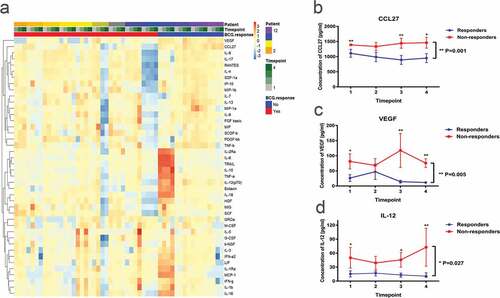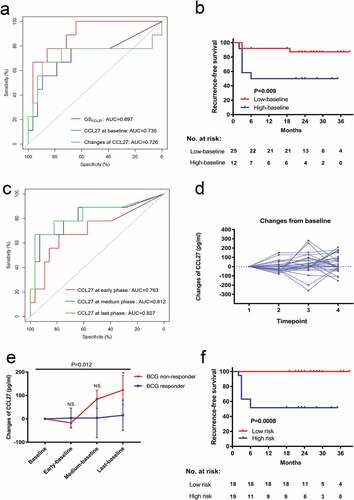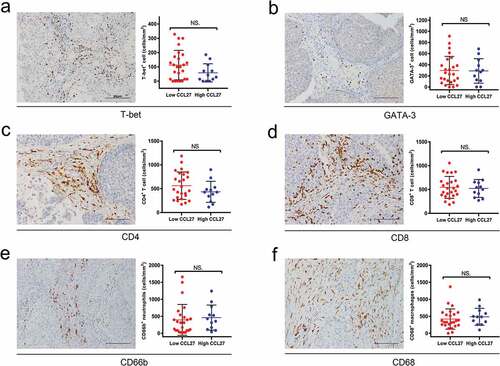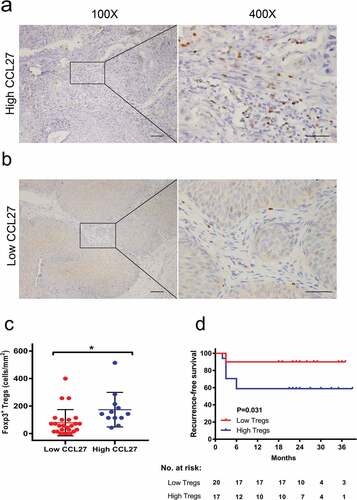Figures & data
Figure 1. Identification of serum CCL27 in the discovery set.

Table 1. Patients characteristics in validation cohort stratified by treatment response to BCG.
Table 2. Patients characteristics in validation set stratified by baseline level of serum CCL27.
Figure 2. Baseline levels and dynamic change of serum CCL27 may predict the treatment response to intravesical BCG immunotherapy in the validation set.

Figure 3. Immunohistochemistry analysis of each immune cell subtype in the tumor microenvironment and its correlation with serum CCL27.

Figure 4. Association between serum CCL27 and regulatory T cells (Tregs) in the tumor microenvironment.

